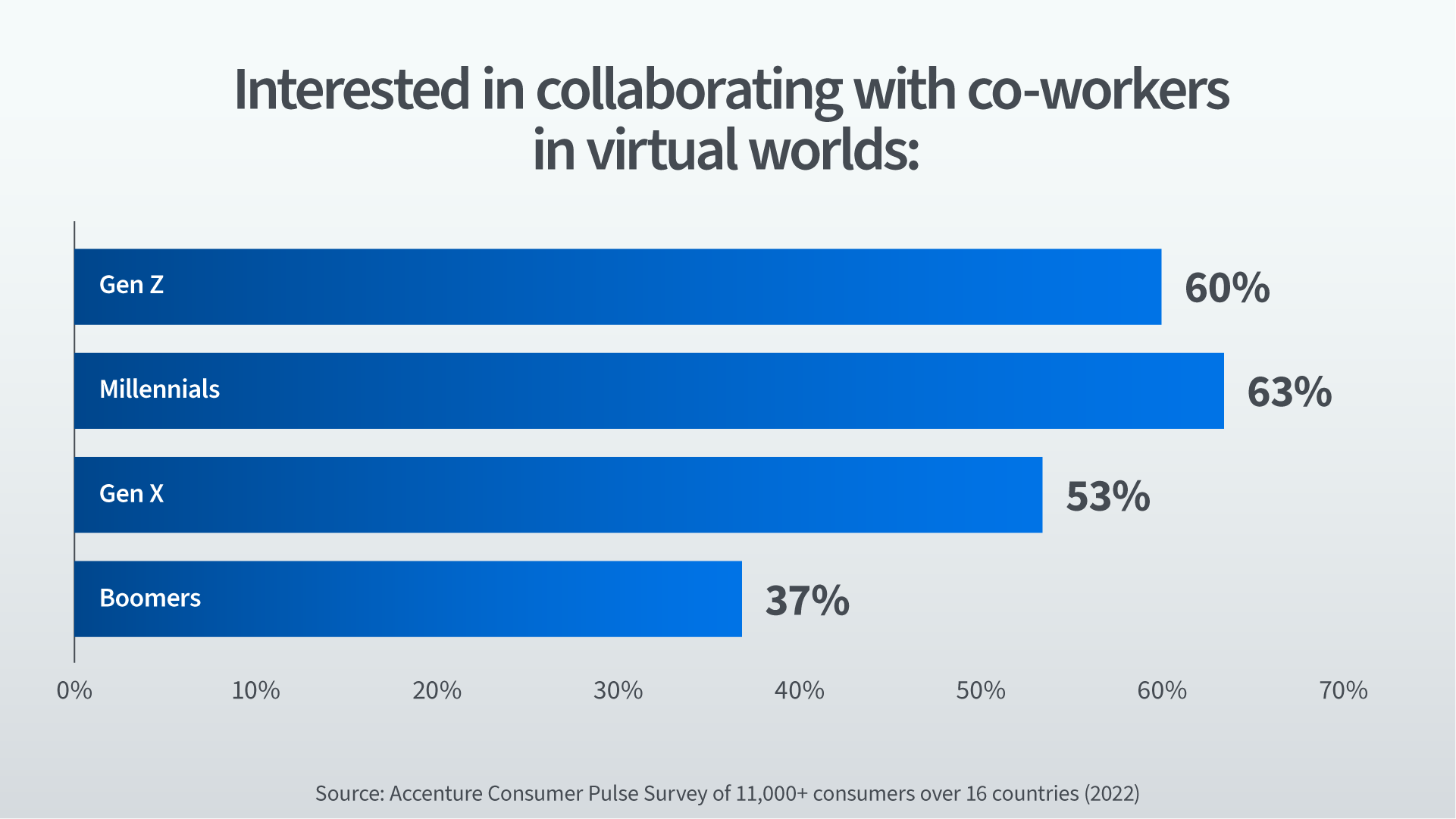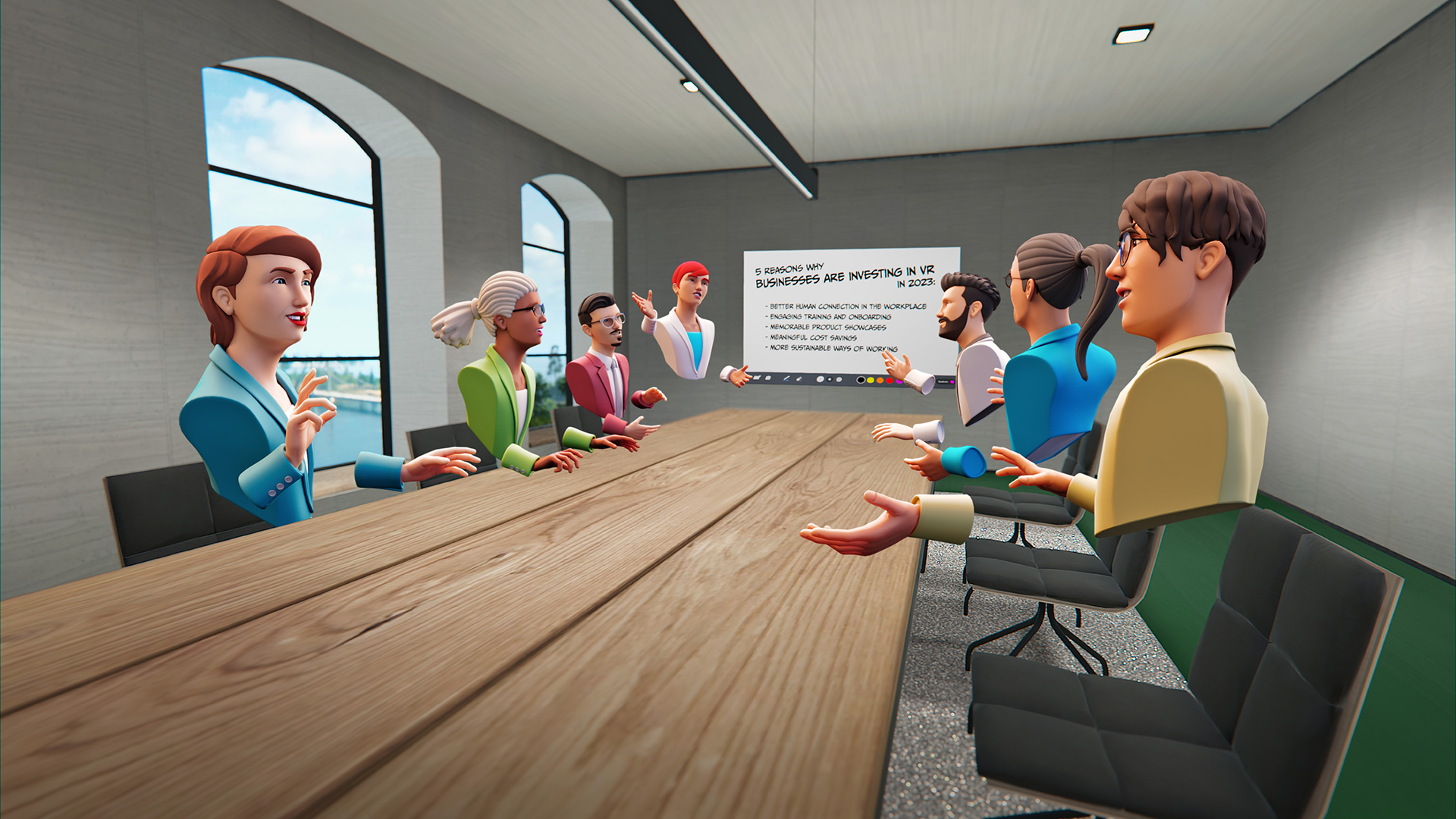With remote work seemingly a permanent fixture in the business world, companies are exploring new ways to maintain team unity and productivity. Our solution to this, of course, is the use of Virtual Reality (VR) collaboration technology to allow employees to join virtual meetings with their colleagues as if they were physically present in the same room.
In this article, we highlight the top 5 reasons why businesses are investing in VR technology.
1. Better human connection in the workplace
For many companies, the core appeal of VR-based virtual collaboration lies in its ability to foster closer connections among geographically dispersed employees. While most people like the freedom and flexibility of working remotely, conventional digital tools can leave us feeling less engaged with our work. We’re hardwired to need human connection and a reliance on video calling can lead to feelings of isolation and loneliness.
3D workspaces overcome this challenge by bringing workers together in the same virtual space, creating a sense of presence and immersion so that interactions feel face to face. This in turn promotes better communication and stronger connections between team members.
Most people are ready to try working in this way. According to an Accenture poll of 11,000 consumers in 16 countries, most people under 58 – i.e. generation Xers or younger – would be interested in working with colleagues in virtual worlds in the year ahead.
In fact, virtual collaboration was the top scoring category, beating out other metaverse experiences like virtual shopping, entertainment and travel.

Figure 1: Gen Z and Millennials are keen to try virtual collaboration in their work in the next year. Source: Accenture
2. More engaging training and onboarding
Virtual training has become one of the most popular use cases for VR technology. Greater immersion in your environment can promote emotional involvement with the subject matter, which results in better training outcomes and greater recall for learners.
Because you’re dealing with pixels, there are also few limits on what training scenarios you might create. Glue customers have developed branded spaces to support onboarding of remote employees and soft skill development, as well as settings for practicing emergency healthcare or machine operation.
3. Memorable product showcases
One way to stand out in a crowded market is by giving your customers unique and memorable moments with your product, wherever they are in the world.
VR allows many kinds of interactions that aren’t possible on the 2D internet or in real-world settings. For example, you might let customers visualize different configurations of your product in 3D before choosing which prototypes to create.
Demonstrations of large installations and complex technologies can also be brought into VR in a safe and cost-effective manner. A quantum computer, for example, is not something you can easily take with you to a technology conference. But give people a VR headset and you can still let them get up close with the technology. That’s exactly what IQM has done with its new showcase built in Glue.
4. Meaningful cost savings
Training environments and product showcases can be reused time and again. In fact, VR helps save money wherever it is used in place of in-person gatherings, especially when they would require business travel.
Given rising airfares and hotel costs, the cost-per-attendee for meetings and events was on course to jump 25% in 2022 compared to 2019, before increasing another 7% in 2023. Amid ongoing economic uncertainty and flagging business confidence, we expect more enterprises to look to virtual meetings as an affordable and effective alternative to in-person meetings and events.
The upfront costs of VR have never been lower, while individual subscriptions to 3D workspaces like Glue are as little as $50 a month.
5. More sustainable ways of working
Less business travel also means less impact on the environment. Researchers have found that switching from in-person to virtual conferencing can cut carbon footprints by 94% and energy use by 90%.
Meanwhile, the International Energy Agency (IEA) has said that if people work 60% of their work-week at home rather than in the office, we could avoid consuming some 500,000 barrels of oil a day.
It’s not always straightforward to estimate the emissions that can be avoided by switching specifically to VR-based virtual collaboration. But good examples can be found.
Take the legal team at Hewlett Packard Enterprise, which calculated the impact of holding one meeting usually held face to face in Glue instead. By its estimates, the air travel alone for the meeting would have generated 5,658 kg of CO2, whereas the emissions generated by holding the meeting in VR were just 20 kg of CO2.
Conclusion
There are many compelling use cases for VR in the world of work, ranging from productive virtual meetings that can help foster a more positive and inclusive company culture to innovative product showcases.
Modest deployment costs and the potential for significant savings have also made the business case for VR more compelling than ever before.
As the technology continues to evolve, we expect to see even more companies take the plunge into VR.
Ready to start your virtual collaboration journey?
Book a demo to start experimenting with virtual collaboration in your business.




